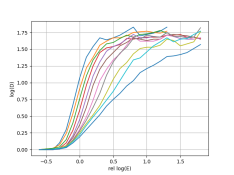weasel
Member
- Joined
- Nov 25, 2006
- Messages
- 171
- Format
- Medium Format
I just started shooting a new film and developer combo, and have been doing testing to determine film speed and developing times. The method I have used for years is a pretty standard visual test, no densitometer, very similar to lots of other peoples published tests.
Here is my question, and i dont know why I have never really thought about this before, but this testing system is based on using one particular paper, and one particular contrast grade. I have always just used a number 2 filter if im using variable contrast paper. My negatives will now be tailored to that. But how do I know that that filter grade is getting the full range of what the paper can give me? Is a grade 2 really a grade two?
Should I be figuring that out before I even start, and if so, how? Or does it really matter?
Here is my question, and i dont know why I have never really thought about this before, but this testing system is based on using one particular paper, and one particular contrast grade. I have always just used a number 2 filter if im using variable contrast paper. My negatives will now be tailored to that. But how do I know that that filter grade is getting the full range of what the paper can give me? Is a grade 2 really a grade two?
Should I be figuring that out before I even start, and if so, how? Or does it really matter?













